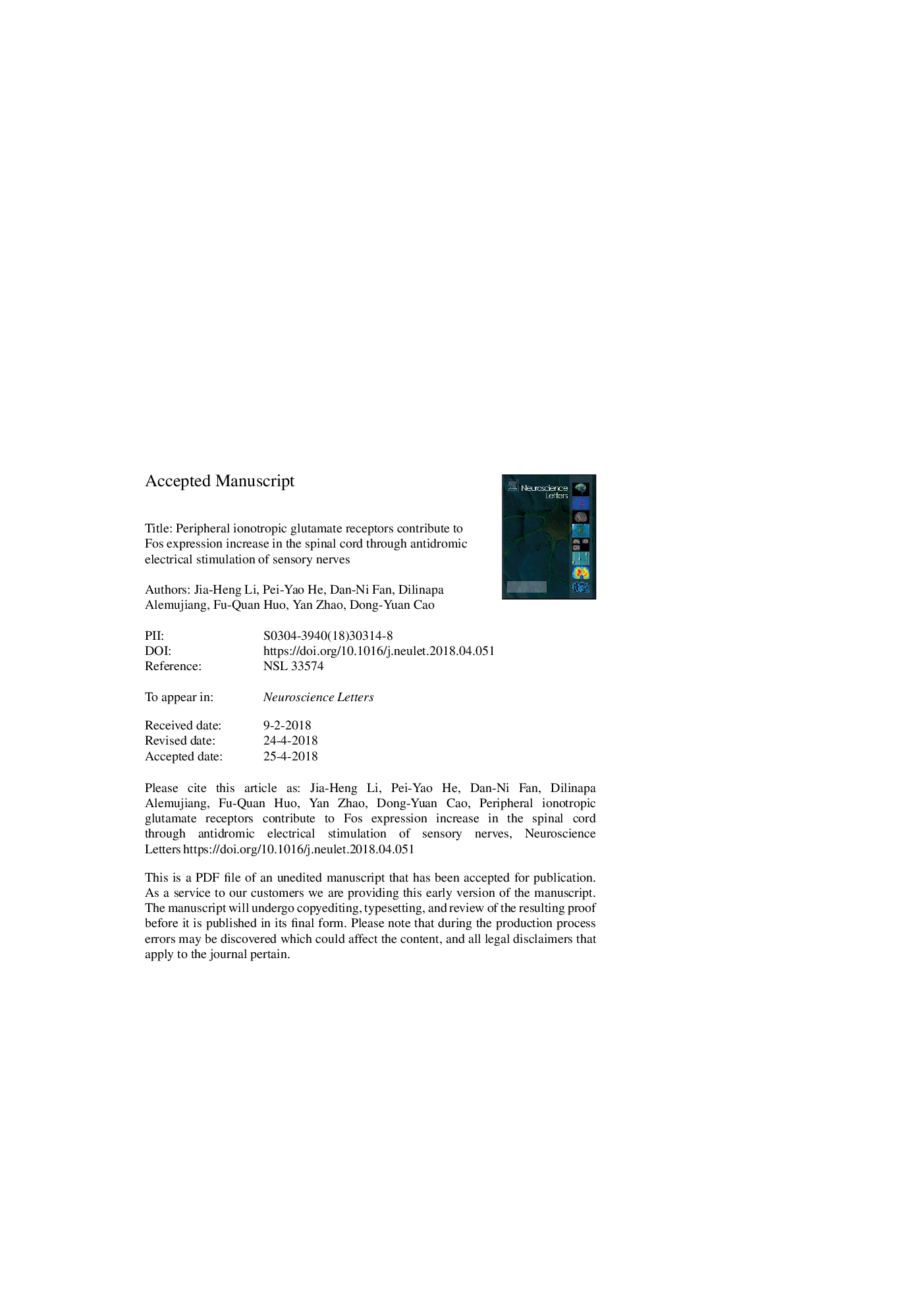| کد مقاله | کد نشریه | سال انتشار | مقاله انگلیسی | نسخه تمام متن |
|---|---|---|---|---|
| 8841458 | 1615021 | 2018 | 22 صفحه PDF | دانلود رایگان |
عنوان انگلیسی مقاله ISI
Peripheral ionotropic glutamate receptors contribute to Fos expression increase in the spinal cord through antidromic electrical stimulation of sensory nerves
دانلود مقاله + سفارش ترجمه
دانلود مقاله ISI انگلیسی
رایگان برای ایرانیان
کلمات کلیدی
موضوعات مرتبط
علوم زیستی و بیوفناوری
علم عصب شناسی
علوم اعصاب (عمومی)
پیش نمایش صفحه اول مقاله

چکیده انگلیسی
Previous studies have shown that peripheral ionotropic glutamate receptors are involved in the increase in sensitivity of a cutaneous branch of spinal dorsal ramus (CBDR) through antidromic electrical stimulation (ADES) of another CBDR in the adjacent segment. CBDR in the thoracic segments run parallel to each other and no synaptic contact at the periphery is reported. The present study investigated whether the increased sensitivity of peripheral sensory nerves via ADES of a CBDR induced Fos expression changes in the adjacent segments of the spinal cord. Fos expression increased in the T8 - T12 segments of the spinal cord evoked by ADES of the T10 CBDR in rats. The increased Fos expression in the T11 and T12, but not T8 - T10 spinal cord segments, was significantly blocked by local application of either N-methyl-D-aspartate (NMDA) receptor antagonist dizocilpine maleate (MK-801) or non-NMDA receptor antagonist 6,7-dinitroquinoxaline-2,3-dione (DNQX) into the receptive field of T11 CBDR. The results suggest that endogenous glutamate released by ADES of sensory nerve may bind to peripheral ionotropic glutamate receptors and activate adjacent sensory nerve endings to increase the sensitivity of the spinal cord. These data reveal the potential mechanisms of neuron activation in the spinal cord evoked by peripheral sensitization.
ناشر
Database: Elsevier - ScienceDirect (ساینس دایرکت)
Journal: Neuroscience Letters - Volume 678, 21 June 2018, Pages 1-7
Journal: Neuroscience Letters - Volume 678, 21 June 2018, Pages 1-7
نویسندگان
Jia-Heng Li, Pei-Yao He, Dan-Ni Fan, Dilinapa Alemujiang, Fu-Quan Huo, Yan Zhao, Dong-Yuan Cao,